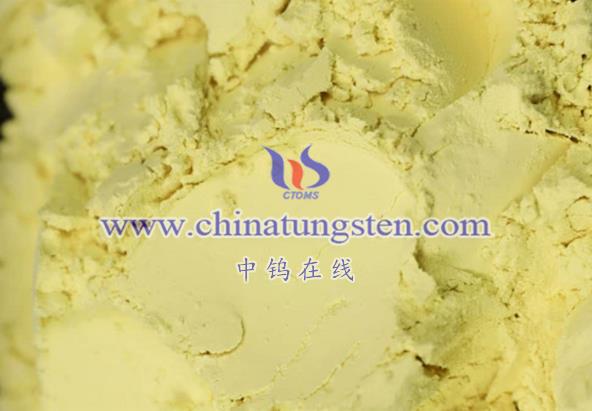
Advantages of Triclinic Tungsten Oxide
- Catalytic Activity
Like other forms of WO₃, triclinic tungsten oxide may exhibit good catalytic properties, particularly in oxidation reactions. Its crystal structure could potentially provide active sites for catalysis, making it useful in specific chemical reactions such as the oxidation of organic compounds. While monoclinic WO₃ is more commonly studied for catalysis, triclinic WO₃ could also show catalytic activity under the right conditions. - Optical Properties
WO₃ is known for its ability to absorb and transmit visible and infrared light. This gives it potential applications in optoelectronic devices and photocatalytic materials. If triclinic WO₃ retains these optical properties, it could be useful in light-based technologies, offering unique advantages in optical sensors and coatings due to its potential for higher absorption or different transmission characteristics. - Electrical Properties
WO₃ exhibits interesting electrical properties, particularly in electron conduction and ion transport, which make it valuable for applications in electronics and electrochemistry. Triclinic WO₃, if it retains these electrical characteristics, could be used in advanced electronic devices or electrochemical cells, offering potential for specialized applications in energy storage or sensors. - Gas Sensing
WO₃ materials are known for their gas sensing capabilities, and triclinic WO₃ may offer even more specialized behavior for detecting gases. If it shows improved sensitivity and selectivity in gas detection, it could be applied in high-performance sensors for detecting industrial gas leaks or monitoring air quality, particularly in environments where precision is crucial. - Stability Under Specific Conditions
Under certain conditions (like specific temperatures, pressures, or atmospheres), triclinic WO₃ may demonstrate a high degree of stability. This would be beneficial in harsh environments, such as high-temperature applications or aggressive chemical surroundings, where other forms of WO₃ might degrade more quickly.
Disadvantages of Triclinic Tungsten Oxide
- Difficult Preparation
Compared to more common crystal structures like monoclinic WO₃, preparing triclinic WO₃ could be more challenging. It might require precise temperature, pressure, or chemical conditions, making the synthesis process complex and costly. This could limit its large-scale production and industrial application, as more common WO₃ forms are easier to produce. - Potential Instability in Performance
The relatively complex crystal structure of triclinic WO₃ could make it more sensitive to environmental factors such as temperature, humidity, and light exposure. These factors might lead to unstable performance over time, limiting its effectiveness in certain applications, especially those requiring high reliability and consistent behavior. - Limited Applications
Due to the difficulty in synthesis and potential performance instability, the applications of triclinic WO₃ could be limited. In fields requiring highly stable and precise materials—such as high-performance sensors or sophisticated electronic devices—triclinic WO₃ might face challenges in competing with other more stable or easier-to-manufacture materials. - Oxidation Issues
Tungsten oxide is prone to oxidation under high-temperature and humid conditions, which can lead to performance degradation and a shorter lifespan. If triclinic WO₃ exhibits similar behavior, additional protective measures would be necessary to prevent oxidation and ensure its longevity in applications. - Difficult Processing
Tungsten oxide generally has high hardness, making it difficult to process, cut, or shape. If triclinic WO₃ maintains this characteristic, it would require specialized equipment and techniques for fabrication, potentially increasing manufacturing costs and complexity. This could be an issue in applications where precise shaping or fine processing is required.
In summary, while triclinic tungsten oxide has several potential advantages—such as catalytic, optical, electrical, and gas-sensing properties—its difficulties in synthesis, potential instability, and challenges with oxidation and processing may limit its broader applications. Research into its specific properties and performance under various conditions will help determine whether these disadvantages can be mitigated.
More details of tungsten oxide product, please visit website: tungsten-oxide.com
Please contact CHINATUNGSTEN for inquiry and order of tungsten oxide:
Email: sales@chinatungsten.com
Tel.: 86 592 5129595

















